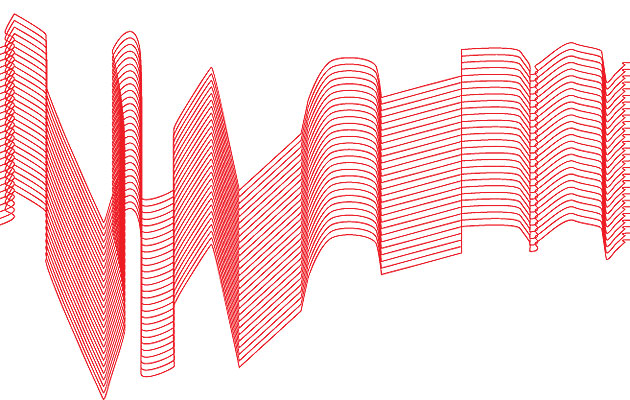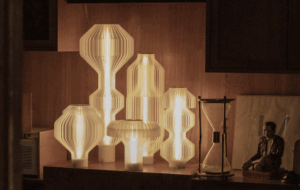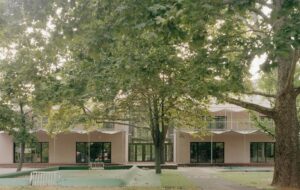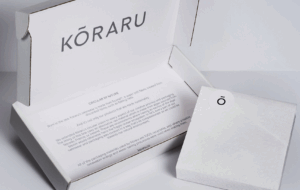|
|
||
|
The earthquake on 11 March revealed how easily the fragile networks of buildings, communications and people that make up the modern city can be pulled apart. Now, in the Japanese capital, ghostly symbols warn of electricity shortages and the street lights and neon signs seldom come on. The mood recalls the struggles of the postwar years, and an older culture of sobriety and discretion. I was in Tokyo on 11 March, and in the days immediately afterwards. If my view of the disaster has largely been the view from the city, my view of the city is now seen through the lens of the disaster. A city is composed of many layers, some tangible, some not. Buildings and people and things; information and movements and energies; hopes and fears and imaginings. These are normally wrapped up and woven into the fabric of the everyday, but the disaster pulled apart and exposed these layers in dramatic fashion. Earthquakes generally announce themselves with a sudden quiver followed by a mild shaking, which then builds over ten or 15 seconds until it reaches a peak intensity, from which it gradually dies away. The first few seconds are filled with tension, as you scramble to assess how big it will get, and what action to take. Usually the intensity eases off before it reaches the threshold of real alarm, but on 11 March, the shaking took hold of the building I was in (a university dining hall) and shoved it about in mighty waves, each of which was bigger than the last. Even as it quickly became obvious that this was no ordinary quake, what should have goaded me into action instead paralysed me, as I wondered whether to take cover or to flee the building’s double-height glass facade that looked like it would splinter at any moment. In the midst of the commotion, I remember noting the strange staccato flicking of the trees beyond the glass, so different from the way they usually swayed in the wind. People around me began to scream and run outside, taking their chances with the glass doors and I soon followed them, out into the street, where the ground continued to pitch and roll, as if it was the deck of an enormous boat adrift in a storm. And so as people poured out into the streets and plazas, the first layer of the city, the physical shells that are its buildings, was peeled back. I was astounded at just how many people spilled out of the buildings surrounding the central court of the university campus where I work, at a time of the year when few people are about. Who would have thought that these structures shuffled and sorted all these people … Buildings, usually so solid and impassive, which seem to belong to the order of inanimate objects, revealed their nature as carapaces of the social: hard, thin, and ultimately flexible enough under the forces of an earthquake to encase and protect the people they contain.
The urge to communicate immediately followed the urge to flee. In normally taciturn Japan, it was refreshing to see strangers talking to and checking up on each other. But after ensuring that you and those around you were out of direct danger, the first impulse was to reach for the mobile phone and call loved ones, and the universality of this impulse doomed it to failure. Within seconds of the quake, voice services on mobile phones became hopelessly jammed throughout the country. It was simply impossible to get through, no matter how many times one tried. And herein lies a contemporary lesson: when voice fails, go data. The powerful contemporary communication technologies embedded in smart phones, which normally exceed the requirements of their users, were given their biggest test, and succeeded brilliantly – at least in those areas which still had electricity. Mobile Twitter, which in the past year or so has achieved a remarkable level of market penetration in Japan, instantly became the medium of choice for sending news of one’s safety and checking on the well-being of friends and family. Texts and mobile email backed up this channel. The disaster appears to have driven the use of social media in the weeks since the disaster as an alternative source of information, as scepticism of both official sources and mainstream media accounts increased. As aftershocks rattled buildings, the university population, chattering excitedly, evacuated to the safety of a nearby park. There was an almost festive atmosphere in the crowd, a sense of relief that the moment of maximum danger had seemed to pass without major incident. But some people had phones equipped with “1-seg”, a technology delivering TV broadcasts to mobile phones and, as live footage of the tsunami striking the northern coastline starting coming in, they became magnets for huddled groups. An awareness of the dreadful scale of the catastrophe began to set in. The names of the towns flashing up on the screens were those that in subsequent days were revealed to have been scraped clean from the surface of the earth: Natori, Ishinomaki, Kesennuma, Ofunato, Kamaishi, Miyako. Most of these are towns nestling in the nooks and crannies of the Tohoku region’s Rias coastline. The sunken river valleys of this landscape yield deep sheltered harbours, giving them the basis for their existence as fishing communities, but also sealing their fate by concentrating the surge of the tsunami. A city is a gathering of flows as much as a collection of places, none more so than Tokyo. But when the quake struck at 2:46pm, Tokyo stopped. All train and subway lines came to a standstill. Elevators halted. Traffic slowed to a crawl. Enormous crowds banked up at train stations. Night fell on a city frozen in place and transfixed by aerial footage of tsunamis and huge fires. As the mechanised movement systems of the metropolis ceased to function, people took to walking. Many thousands walked all night to get home. Others, myself included, stayed put, hunkering down on office floors under emergency blankets, in shuddering buildings, dreading what the morning would reveal. In a city whose surfaces are populated by garishly cute characters, a new face appeared. Unusually subdued, bearing an air of quiet resignation and a faint aura of sadness, the face is formed by the silhouette of an electricity bulb upon which two upturned half-circles are placed to one side. That is all. No other graphic elements by which one could deduce gender, character or emotion are allowed to intrude. In common with the mute rapture of Hello Kitty, there is no mouth, but there are also no ears and no nose, and the eyes are closed. This symbol is used by Tokyo Metro, one of the operators of Tokyo’s network of subway lines, to accompany its notices regarding measures introduced under the policy of setsuden, or “conserving electricity”. Setsuden is one of the ongoing effects of the multiple disasters that struck Japan on 11 March, combining earthquakes, tsunamis, infernos and nuclear emergencies into a vast catastrophe. Other effects include rolling blackouts; fuel shortages; panic buying of bottled water, dried noodles, batteries and toilet paper; food safety alerts; radiation warnings; disappearing foreigners; and underlying it all, the twin horrors of the massive devastation along the northern Pacific coastline and the unfolding nuclear calamity at Fukushima Daiichi nuclear power plant. The setsuden character perfectly captures the dominant Japanese reaction to the situation. The expression seems to convey the mix of silent grief, stoical endurance and shared sacrifice seen in the eyes and actions of the thousands of survivors and volunteers that fill relief centres scattered across the stricken areas. These are the qualities that have been celebrated in numerous glowing accounts both at home and abroad of Japanese self-discipline and restraint in response to the disaster. But its simplicity and quietude also captures an ambiguity in the Japanese response that has been subject to less laudatory interpretations, especially in relation to the nuclear predicament. In this reading the closed eyes, rather than a sign of summoning up inner strength, can be seen as a wilful refusal to confront unpleasant facts and imminent dangers; and the absence of a mouth as signifying a reluctance to communicate needs or question authority. The gap between these two readings measures out the variations in individual responses to the disaster, the disparity between the local and foreign media accounts of it, the distance between cultures. It spans alternate world-views, systems of ethics, philosophies of life. In ways such as this, the events of 11 March, savage and blind in their summary dispensation of death and destruction, have also shed light on aspects of life that previously went ignored or unnoticed. It is as though, as in Camus’ novel The Plague, the unfolding disaster peels back the layers of expectation and convention that form the crust of civilisation. The unravelling of these three elements – buildings, communications, transportation – constituted the immediate impact of the disaster on the city. This lasted for a little over 24 hours – the period between the quake and the first explosion at Fukushima Daiichi nuclear power plant. With this event, the disaster entered a new phase, less spectacular but more ominous than the initial one, which it still has not recovered from. It is a condition marked by power cuts, product shortages, radiation and health warnings, and a haemorrhaging of people and confidence. Tokyo now feels like a city at war. Alarm began to build after images of the first explosion at the plant rocketed around the net while, on TV, government officials dressed in cotton workman’s overalls to show diligence seemed unclear or evasive about the situation. Suspicions grew that the authorities might not be telling the whole truth, or might not even know it themselves. Facebook groups quickly sprang up to crowdsource information. One man with a geiger counter set up a page and started roaming the city, measuring radiation levels and posting photos of the readout with well-known landmarks in the background. He quickly gathered hundreds of followers. With remarkable speed, ordinary people became instant experts on radioactive decay and nuclear power plant design, acquiring whole new vocabularies, trading quips about “microsieverts”, “containment structures” and the relative dangers of iodine-134 versus caesium-137. Added to this new language of nuclear literacy, the vocabulary of which is often in English, is a set of Japanese terms peppering the official responses to the disaster. The size of the tsunami was soteigai, “outside our assumptions”. The radiation levels pose no health danger tadachi-ni, “immediately”. The damage to electricity generating capacity requires keikaku teiden, “rolling blackouts”. The great loss of human life and resources obliges us all to exercise jishuku, “self-restraint”. As the nuclear crisis deepened, and the prime minister and ultimately even the emperor appeared on television to underscore the seriousness of the situation facing the country, fear swept the city. International news media parachuted in their big shots for eyewitness reports, and duly started breathless reporting on “radioactive ghost town Tokyo”, interpreting the masks that the sufferers of springtime pollen allergies routinely wear here as evidence. Alarmed by the uncertainty of the situation, and urged on by panicked relatives abroad, many foreigners sought to leave the city, a reaction which quickly resulted in the emergence of the scornful new term “flyjin”, a play on gaijin, the Japanese word for foreigner. The sombre mixture of grief, self-restraint, and paranoia in Tokyo’s citizens found its reflection in the visage of the city itself. Tokyo went dark. All manner of luminaires – street lights, park lights, lights in shops and stations – have been switched off. Most dramatically, the brilliant neon signs and building-sized video screens that give the city its celebrated psychedelic intensity are now extinguished. Remarkably, this was not due to any official prohibition as such, but is the consequence of the actions of thousands of business owners responding to the appeal of the authorities to reduce power consumption. The practical measure of “conserving electricity” has meshed perfectly with the psychological measure of “self-restraint”, transforming the city into a realm of silhouettes and shadows. The nocturnal streets of Shibuya and Shinjuku, normally ablaze in colour and full of people, now feel like the chiaroscuro streets of postwar Vienna in Carol Reed’s The Third Man, a place where faces cannot be seen, the shadows cast are long, and nothing is as it seems. An urban metaphor, perhaps, of the way the nuclear industry prefers to operate. But in the quiet patina of these streets I find also a less threatening image, that of an older Japanese culture of subtlety and discretion, written about affectionately by the novelist Junichiro Tanizaki in his 1933 essay on aesthetics, In Praise of Shadows. The spontaneous outbreak of darkness at a moment of national crisis stands in vivid contrast to the unfurling of American flags that I witnessed in New York in the days after 11September 2001, a contrast that I suggest reflects well on Japan. As I write these words on 11 April, one month after the disaster, the cherry trees are in full bloom, and blossom-viewing parties fill the parks. But spring’s festivities have taken on a darker hue, as over-zealous enforcers of jishuku inspect picnic hampers for alcohol, and the evening illuminations are left unlit. Mixing with the subtle perfume of the blossoms is the sharper scent of anxiety; aftershocks keep up the adrenaline as I write. 3/11 has become a significant date for Japan, a rupture in the ties that bind the past to the future. Even as a kind of normality in the capital resumes, it is not a return to the normality of the time before the disaster, but a retreat to a straitened, sepia-tinted era of dim lights and long trudges up subway stairs. And of course there is no normality at all in the devastated areas, where hundreds of thousands huddle on school gymnasium floors; and in the land around the Fukushima plant, where abandoned animals desperately search for food. This period of suffering, restraint and sobriety harks back to the struggles of the postwar years, and even further back to the years after the massive earthquake that destroyed Tokyo in 1923. Despite their difficulties, those reconstruction years were times of energy and aspiration, when a new city and a new nation were built. As plans are drawn up for yet another reconstruction, it is clear that Tokyo’s future will not be the same as the past. Whether it is a brighter future is not yet clear.
|
Image Shazia Chaudhry
Words Julian Worrall |
|
|
||



















